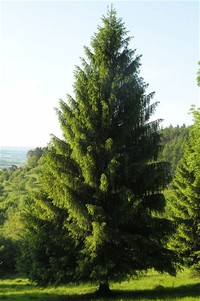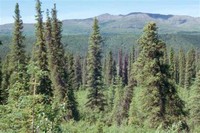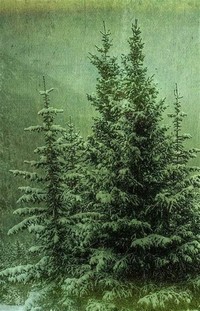Facts about Taiga

The taiga experiences relatively low precipitation throughout the year (200–750 mm annually), primarily as rain during the summer months, but also as fog and snow.

The southernmost part of the taiga also has trees like oak, maple, and elm scattered among the conifers.

In Canada, boreal forest is the term used to refer to the southern part of this biome, while "taiga" is used to describe the more barren northern areas of the Arctic tree line.

The world's largest terrestrial biome, the taiga (pronounced /?ta?g?/) is a major subarctic, geographic region of the earth's surface characterized by coniferous forests and generally long and cold winters.

Taiga has a harsh continental climate with a very large temperature range between summer and winter, classified as "Dfc" or "Dfb" in the Kцppen climate classification scheme.

Evergreen species in the taiga (spruce, fir, and pine) have a number of adaptations specifically for survival in harsh taiga winters, though larch, the most cold-tolerant of all trees, is deciduous.

The elk (or wapiti, Cervus canadensis), moose (Alces alces), wolf (Canis lupus), fox, and sable (Martes zibellina) populate the taiga.

The taiga is home to a number of large herbivorous mammals and smaller rodents.

Snow may remain on the ground for as long as nine months in the northernmost extensions of the taiga ecozone (Sayre 1994).

Across Scandanavia and western Russia, the Scots pine is a common component of the taiga.

The Taiga is an important ecosystem for the health and stability of the planet and a place of profound beauty.

The taiga is bordered on the south by the even more temperate areas of the steppes, prairies, and hardwood forests.

Taiga soil tends to be young and nutrient-poor; it lacks the deep, organically-enriched profile present in temperate deciduous forests (Sayre 1994).

Others differ regionally, typically with each genus having several distinct species, each occupying different regions of the taiga.

Of the perhaps 300 species of birds that summer in the taiga, only 30 stay for the winter (Sayre 1994).

Taiga trees tend to have shallow roots to take advantage of the thin soils, while many of them seasonally alter their biochemistry to make them more resistant to freezing, called "hardening" (Sayre 1994).

The taiga is considered to be an ecological zone that is south of, and more temperate than, the tundra and to be characterized mainly by the prevalence of coniferous forests.


